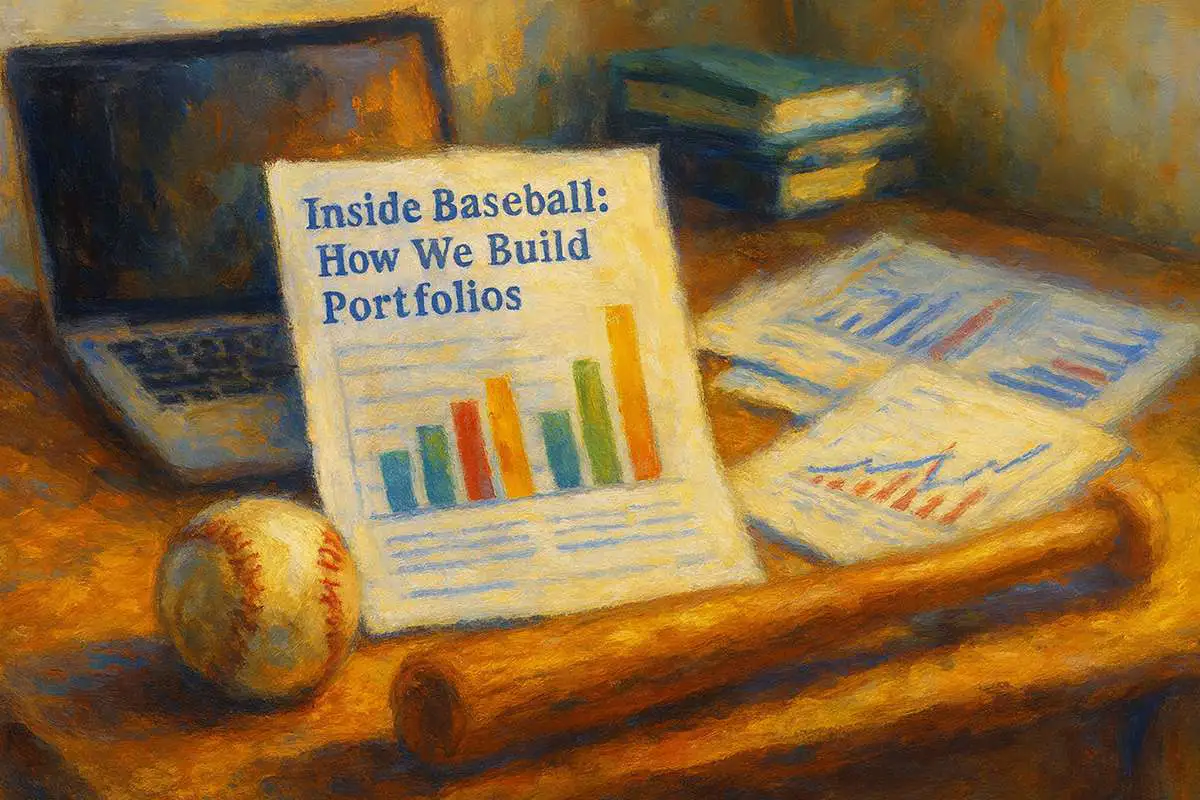This is Part 3 from my client letter where I talk about my trip to International Petroleum in Calgary, the economics of Canadian oil sands, and the importance of corporate culture. You can read Part 1 & 2 here.
Skin in the Game, Steam in the Ground (Part 3)
The Intellectual Investor Conference in Vail (formerly known as VALUEx Vail) concluded on Friday, June 13th. Two days later, my son Jonah and I flew to Calgary to tour International Petroleum’s Blackrod project, one of the largest projects in Alberta’s oil sands. IPCO’s management organized our visit. During this trip, we also met with the management of two of our other holdings: Canadian Natural (CNQ) and Pason (PSI).
IMA is one of the largest shareholders of IPCO, which is a very special company. It is special not because of its assets but because of the people who run it. It was founded by the Lundin family. Swedish engineer Adolf Lundin, who passed away in 2006, founded half a dozen mining and oil companies that have been incredibly successful, with his sons later continuing the family’s business ventures.
Adolf’s crown business achievement is Lundin Energy, which he started in 2000 with a $50 million equity raise (the only equity raise it has ever made). Lundin Energy discovered one of the largest oil fields on the Norwegian Continental Shelf. Twenty years later, it was sold to Aker BP for $14 billion (we are a shareholder of Aker BP as well). Before it was sold to Aker, Lundin Energy spun off all non-Norwegian assets, and this is how IPCO was born.
The Lundin family is extremely respected in the oil and mining industry for the simple reason that they have been repeatedly successful in many businesses for decades (although luck undoubtedly played a role in their achievements).
I have been thinking a lot about the sources of their success. It is uncommon today to see family empires built in the resource industry. Resource businesses are extremely challenging and highly cyclical. This cyclicality is a bug for most other companies, but the Lundins turned it into a feature. Unlike most publicly traded oil companies that are run by “professional” career CEOs who may or may not have much skin in the game and whose tenure typically has a runway of five years, the Lundins do have skin in the game. They are large shareholders in anything they run (they own 60% of IPCO), and they think long term.
They may have engineering degrees, but they are businessmen first and engineers second, at least when it comes to capital allocation decisions. There is absolutely nothing wrong with being an engineer. I’d love for my kids to be engineers – if it made them happy. However, in my experience with resource companies, be it gold, copper, or energy, is that CEOs with an engineering mindset become like men with hammers: Every problem looks like a nail; every hole in the ground needs to be drilled; and every mine needs to be developed, no matter what the economics are or the best use of capital.
When commodity prices are high, these guys get drunk on their own Kool-Aid, believing this time is different and expecting high prices to remain elevated forever. They end up making uneconomic decisions, and shareholder value gets destroyed. They forget the truism in commodity and capital-cycle industries that high prices cure high prices and low prices cure low prices. When prices are high, more capital flows into the industry and supply matches and then exceeds demand, leading to falling prices.
Conversely, when prices are low, companies tend to stop investing in production, demand exceeds supply, and prices rise. These dynamics are particularly pronounced and extreme in resource and material industries.
The Lundins are different, and I believe this is largely the source of their success. In addition to being good engineers, they are excellent capital allocators. They are countercyclical in their capital allocation – they zig when others zag. When oil prices are high, you want to be building a fortress balance sheet and borrowing money (as they did with IPCO in 2022).
When commodity prices decline and all your competitors are hiding under their desks, you want to be spending this money – you’ll be buying assets from overlevered competitors for pennies on the dollar. I found that the more people are irrational around you, the more it pays to be rational. But this is only a partial reason for their success; I’ll discuss others a bit later.
Blackrod Project
The Blackrod project we went to see in Alberta is very important for IPCO’s future, as it will account for almost half of IPCO’s revenues.
But before I zoom in on it, I need to take you into the world of oil sands. Canada is rich in oil sands (specifically bitumen – a heavy, gooey mass from which crude oil is extracted). There are two methods for extracting oil from oil sands: open-pit mining and in-situ extraction. When bitumen is closer to the surface (less than 75 meters), open-pit mining is used (approximately 80% of oil sands in Canada); otherwise, the in-situ method is used.
Let’s start with open-pit mining. Rock is excavated from the ground and transported on giant trucks (where the wheels are taller than a human). Then the rock is crushed into sand, and oil is steamed out of the sand in giant factories near the mine. Canadian Natural has one of the largest open-pit projects, Horizon, in Alberta. It costs $20 billion and produces 264,000 barrels of oil per day (approximately 96 million barrels per year).
IPCO’s Blackrod oil reserves are buried deep in the ground, and thus the SAGD in-situ method is used. In-situ means “in place” – unlike in open-pit mining, the sand is not moved, and the natural environment is mostly untouched – most oil extraction activity happens deep below ground. SAGD means “steam-assisted gravity drainage.” It is one of several methods used to extract oil below ground. Two horizontal wells are drilled parallel to each other, about 5 meters apart vertically. In the case of Blackrod, they go 100 meters deep and then 1,400 meters horizontal. Steam is injected into the upper well, which liquefies the bitumen, and the oil flows into the bottom well, where it is then pumped out.
Water is separated from the oil, and both go through significant processing. Most of the oil produced in Canada is “heavy.” It is called Western Canadian Select (WCS) – a more viscous oil that needs to be diluted with lighter oil or diluents in order to be transported by pipelines, and thus requires more complex (i.e., expensive) refineries. WCS trades at a discount compared to the “lighter” Western Texas Intermediate (WTI) oil typically produced in Texas or Louisiana. Today, this discount is about $11 per barrel. Transportation costs, pipeline and rail, are another reason for the WCS discount compared to WTI.
Water is the lifeblood of the SAGD process. It is pumped from a nearby reservoir that has mostly “brown” (dirty) water; therefore, the water undergoes a filtration process, including reverse osmosis (similar to the filter you have in your kitchen), and only then is it converted into steam.
Once the steam is pumped into the ground and water is collected with oil, it undergoes a multistage filtration process again. This time around, it also undergoes distillation to remove silica (which can burn pipes), and then it is turned back into steam to extract more oil from the ground. 95% of the water pumped into the ground is recycled back into the process.
As Jonah and I toured Blackrod, it occurred to me that this is more of a giant water processing facility than anything else. In fact, the most significant constraint on production at this enterprise is steam.
The Blackrod project will have multiple phases. This current phase 1 will produce 30,000 barrels of oil a day. It essentially requires three barrels of steam to extract one barrel of oil from the sand; thus, this facility will produce 90,000 barrels of steam per day. If IPCO can increase its production of steam above that figure or increase efficiency (i.e., use less than three barrels of steam to produce a barrel of oil), it will be able to pump more oil – it’s that simple.
Despite the complexity of the operation, there are significant advantages to oil sands production compared to conventional and shale oil fields. Think of oil sands as giant lakes, whereas other types of oil reservoirs are ponds formed by rivers. Oil sands formations are mostly uniform, and thus the oil content is consistent throughout the crust – to some degree it is closer to aggregate (rock that is crushed and used to build roads and buildings) mining than to oil drilling, where oil distribution may vary significantly in more conventional reservoirs and shale (you can hit dry wells, and reserves can have different sizes and come with varying oil pressure).
Other methods of oil extraction often come with steep declines in production over time. The majority of new oil discoveries in the US have been in shale – oil and natural gas are trapped in shale rock. This is the fast-declining type. Your highest level of production is on day one, and then it drops steeply, by as much as 70% within 12 months. Conventional oil wells see annual declines of 4% to 7%, depending on the type of well.
Oil sands projects have relatively low rates of production decline. CNQ’s Horizon project has had a 0% decline. Before investing $850 million in Blackrod, IPCO ran a pilot project for a few years – its decline rate was 3%. The lower the decline, the less maintenance and growth capital you need to invest to keep production constant. The biggest advantage of oil sands assets is that they have a long asset life: 20-50 years for oil sands versus 3-4 years for shale oil.
Blackrod is essentially a factory built literally in the middle of nowhere. It is located near Lac la Biche, a remote town in northern Alberta. It took us a one-hour charter plane ride from Calgary and a two-hour bus ride to get there. IPCO had to build its own roads through the wilderness to develop this project. According to the management, phase 1 is 70% complete, and the project is on budget and on schedule. This is where engineering is paramount. It will be online in late 2026 and running at full capacity by the end of 2027.
IPCO’s Valuation
In our models, when we value oil companies (and in the numbers I am about to discuss), we are using a $75 oil (WTI) price. At $65 oil, earnings decline by about half, and at $85, they increase by about half. Keep that in mind when reading this – these companies are very sensitive to the price of oil. Our estimate of IPCO’s earnings in 2028 (once the Blackrod phase 1 comes online) is approximately 30 Swedish Krona (SEK). The stock is currently at about 150 SEK, as of this writing, so we are paying approximately five times earnings for IPCO’s 2028 earnings.
But wait, there is more.
The Blackrod area has about 1.25 billion barrels of total reserves. Phase 1, which has a lifespan of 23 years, is only going after 250 million barrels, leaving about a billion barrels untouched. We have discussed this with management, and after IPCO completes phase 1, if the time is right (i.e., oil prices are high and there are no better opportunities), IPCO will start developing phase 2, which will have the same production capacity as phase 1 – 30,000 barrels a day, will cost $850 million, and bring about an additional 15-20 SEK per share.
Let’s say IPCO starts working on phase 2 in 2029 and it takes four years to bring it online. Then, by 2033, it will have 45-50 SEK of earnings per share. At 8-10 times earnings, it is a 360-450 SEK stock. These earnings estimates don’t account for the significant value management can create in the interim by buying back stock at a single-digit multiple—you can cancel a lot of shares this way (you’ll own a larger portion of the company). This also doesn’t account for 750 million barrels of reserves (post phase 1 and 2).
Assigning multiples to future earnings is a shortcut – they are second nature to me, but let me explain how cheap IPCO shares are in even simpler terms. Today, the company’s market capitalization (value of all shares outstanding) is $1.7 billion. If oil prices are at $75, over the next six years, IPCO’s free cash flows will be $2 billion – we receive the cash flows it generates beyond year six for free.
If oil prices are at $85, the figure is $3 billion; more importantly, at $65, the figure is still $1.2 billion. We have to reach $50 oil prices before IPCO only breaks even. If oil prices fall to $50 and stay there for a long time, IPCO stock will decline (probably by a lot), but this drop will be temporary (because as we know, low oil prices lead to high oil prices).
Management and Culture
The day after we visited IPCO’s Blackrod, Jonah and I met with Canadian Natural and Pason. After those meetings, once we were in an Uber on the way to the airport (another company we are a shareholder of), I asked him for his thoughts on the companies we visited.
He said, “Dad, I would love working for any one of these companies.”
Jonah’s response really made me think.
These were not random companies we visited. Throughout our research, we had an inkling that they were special. There are a lot of cheap energy stocks out there, but we bought these because we liked the people who ran them. Good management usually fosters good culture.
One common denominator among these companies is that all of them have a flat corporate culture. I have learned to appreciate flat corporate structure for several reasons.
First, it is paramount for information flow. Most interaction with the real world takes place down in the trenches, with employees working in the oil field or interacting with customers. This is where problems are noticed before they bubble up to the top and show up in weak sales numbers, safety issues, or cost overruns. In typical large companies, most authority is concentrated at the top. The more layers you have between decision-makers and the bottom layers of an organization, the less informed and thus lower quality the decisions are.
Second, not all wisdom is trapped at the top. The shorter the distance these ideas have to travel to where the power and capital allocation lies, the better.
I am a big fan of Israel for many reasons, but one of them is its ingenuity – it is often referred to as the Silicon Valley of the Middle East, partly due to its very flat organizational structure. Israelis are very informal and have a healthy indifference to authority – a trait that has a lot to do with the fact that everyone serves in the military and that Israel maintains a large reserve force. Thus, one day a CEO may find himself commanded by his own subordinate.
In Israel, if you have a great idea you can take it directly to upper management. I recently learned that the idea to distribute pagers filled with explosives to Hezbollah terrorists in Lebanon – and then detonate them at the right moment – came from a very low-level female Israeli Defense Forces (IDF) soldier. She had what seemed like a crazy idea and took it straight to the top. Though high-risk and difficult to execute, the operation decapitated Hezbollah’s leadership and proved instrumental in Israel’s victory in Lebanon.
I have heard many stories like this. Here’s another. Several decades ago a concerned citizen knocked on the door of the IDF and said he had a very important idea to share with the head of R&D. That was how Israel’s first military drone came into existence.
Back to our companies.
CNQ does not even have a CEO (yes, you read the sentence right). A committee of C-suite executives meets every Monday and makes decisions together. Though CNQ is located in two skyscrapers in downtown Calgary (they employ thousands of people there), executives don’t have private elevators or big offices (I’m thinking of GM in the 1980s as I write this). They work in cubicles together with everyone else. Any employee can walk up to an executive and ask a question or make a suggestion.
IPCO has a flat corporate structure as well. It doesn’t have traditional “managers.” Every employee who manages people also has main responsibilities. Most people we met at IPCO were “lifers.” As we walked Blackrod with Will Ludin, the CEO of IPCO (Adolf’s grandson), I noticed how he knew every detail about each piece of equipment on the site. I am very impressed by Will.
Pason is located about 15 minutes outside of downtown Calgary (which by the way looks just like Denver) in what from the outside looks like a strip mall. I thought I’d be walking into a Dollar Tree or Dollar General store. But inside it was very inviting – a place where employees would want to commute to.
When I discussed culture with John Faber, the CEO of Pason, he mentioned that he has the smallest office in the company. To which Jonah, putting on the intonation of a well-meaning psychologist, asked, “How does that make you feel?” We had a good laugh.
John mentioned that a good way to measure a work environment is how long people stay at a company. He said that Pason is not the highest-paying place in the industry, but despite that, people never leave the company. He went through a lot of stats showing that people usually retire from Pason due to old age or are carried out.
CNQ and IPCO employees operate like owners – they are heavily incentivized to behave this way. At CNQ, the concept of return on investment is part of the culture; all employees are treated like owners. But while skin in the game and financial incentives are important, they are not everything – a realization I only came to when I started running IMA. People seek meaning; they want to feel good about themselves. Money can be an indicator of success, and having skin in the game creates financial alignment. However, life feels hollow if what you do doesn’t recharge your battery of meaning. We want to feel needed, not just at home by our spouse and kids, but also at work.
Flat corporate culture can empower people, giving them agency and thus meaning.
Key takeaways
- I don’t write for faceless crowds; I write for Dr. M — a client whose irreplaceable savings remind me daily that how I invest must be rooted in responsibility, not in chasing benchmarks.
- Our work may not cure cancer, but it shapes how people live their final chapters — that gravity keeps me focused on survival and long-term stewardship, not quarterly noise.
- The Lundins stand out in the resource world because they combine engineering expertise with capital allocation discipline, zigging when others zag — a lesson in rationality when the crowd gets drunk on optimism.
- Visiting IPCO’s Blackrod project reminded me that great investments are less about flashy assets and more about management culture — owners with skin in the game, flat structures, and meaning beyond money.
- Whether in oil sands or investing, the pattern repeats: cycles punish the reckless, reward the rational, and favor those who treat capital as sacred — that’s the essence of how I invest.









Great article, I read lots of articles and think I have a lot of knowledge but this article really opened my eyes. I had no idea what was involved in extracting oil from tar sands so thank you so much I really enjoy your writing and am jealous of your family ties.
Nicely articulated. Other side of story is they (CNQ) keep diluting company to employees in form of ESOP, when the commodity prices don’t recover is drag on business and balance sheet/share price/EPS. Hopefully the fair value is found and WCS gets its premium back compared to WTI.
Also positive is Shale is running out of capacity and reserves and it becomes harder and harder to find good and cost efficient source.
All things point to canadian oil sands are really under valued. Do you think good dividend plays key role here ?